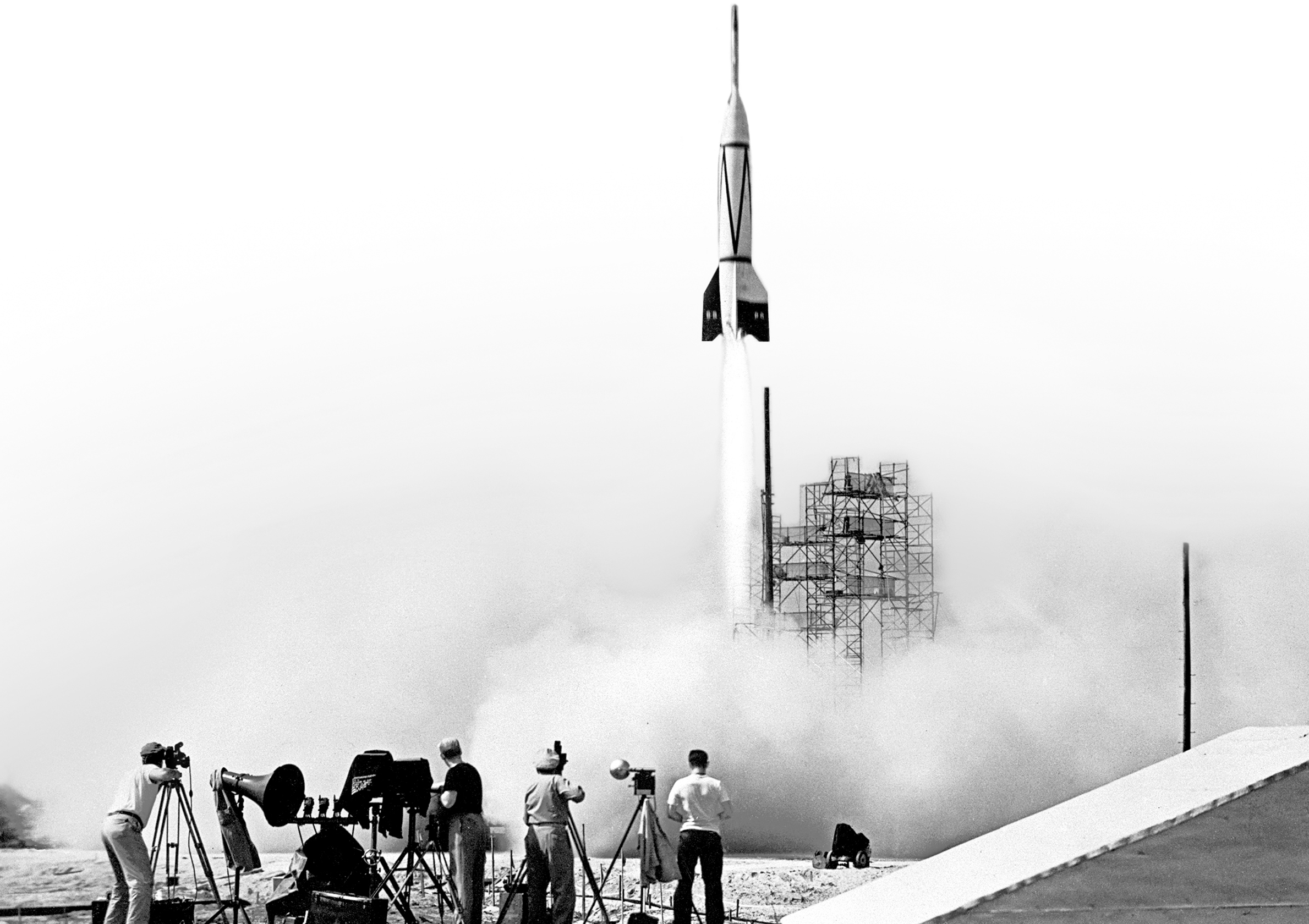A NEW ARMS RACE:
The Space Race Begins
Chuck Yeager breaks the sound barrier
On October 14, 1947, fearless pilot Chuck Yeager was strapped into an experimental, rocket-powered aircraft: the Bell X-1. The X-1 dropped free of a B-29’s bomb bay, and Yeager ignited the rocket engine above the Mojave Desert. With a powerful sonic boom, at 45,000 feet and over 700 miles per hour, Chuck Yeager became the first human to achieve Mach 1—meaning that he was flying faster than the speed of sound!

Yeager with the X-1. He nicknamed all of his aircraft after his wife, Glennis.
Soviet rocket success
While the Americans were making breakthroughs in aeronautics, the Soviets began testing some German V-2 rockets of their own. Their first successful launch came on October 30, 1947. They managed to hit a target 185 miles away!

Launch of an American Bumper rocket 8
First man-made object in space!
On February 24, 1949, the US Army launched the Bumper 5 rocket from White Sands, New Mexico. At an altitude of 244 miles, the rocket became the first artificial object in outer space.
Soviet atomic test
Just a few months later—on August 29, 1949—the Soviets detonated their first atomic bomb. For the first time, the Soviet Union was now on the same playing field as the United States. With both sides building bigger and better weapons, it soon began to look as if nuclear war was inevitable. The only thing stopping it was the knowledge that if World War III started, no one would survive it.
The H-bomb
On November 1, 1952, the United States tested the world’s first hydrogen bomb—a thermonuclear weapon 1,000 times more devastating than the original atomic bomb. (It didn’t take long for the Soviet Union to catch up.)
Lunar prediction
In 1952, a Soviet magazine predicted that the Soviets would land a person on the moon by the end of the century!
Satellite plans
In 1953, Wernher von Braun proposed putting a satellite into space before the Soviets. Von Braun began to develop a series of Jupiter rockets to do just that. Unfortunately, von Braun never got the go-ahead for launch.
The R-7 makes history
The world’s first intercontinental ballistic missile—the R-7—was 112 feet long and weighed over 280 metric tons! It was capable of carrying a three-megaton nuclear warhead a distance of 5,500 miles. After two massive (and expensive) failures, the Soviets made history on October 4, 1957, by launching the world’s first satellite into orbit: Sputnik!
The space race had officially begun, and America hadn’t even left the starting line.